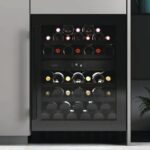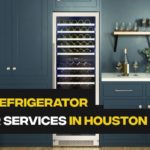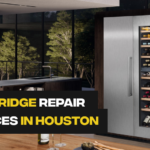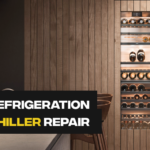Sub-Zero Wine Cooler Temperature Fluctuations
Post Date: June 20, 2024
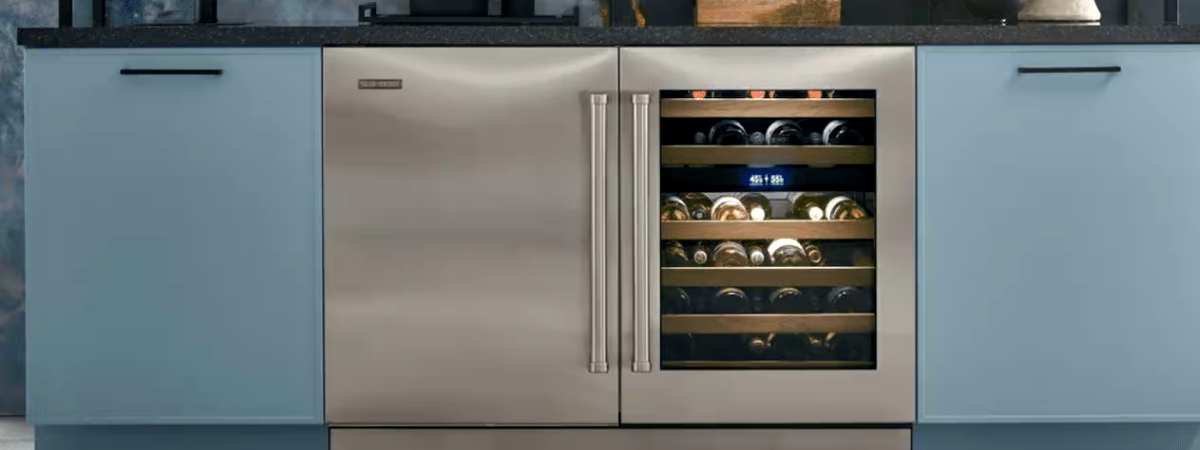
Sub-Zero wine coolers are the epitome of luxury and performance, meticulously designed to preserve your prized wine collection under optimal conditions. However, even the most sophisticated appliances can encounter technical glitches from time to time. Temperature fluctuations in your Sub-Zero wine cooler can significantly impact the quality and longevity of your wines.
Understanding the Cause of Temperature Fluctuations
Several factors can contribute to temperature fluctuations in your Sub-Zero wine cooler:
-
Door opening: Frequent door openings can introduce warm air into the cooler, causing the temperature to rise and then take time to stabilize.
-
Overloading shelves: Overcrowding the shelves can restrict airflow and prevent proper cooling circulation, leading to temperature variations within the cooler.
-
Door seal issues: A damaged or worn-out door seal can allow cold air to escape and warm air to enter, causing temperature fluctuations.
-
Sensor malfunctions: A faulty temperature sensor can provide inaccurate readings to the cooling system, leading to inconsistent temperatures.
-
Refrigerant leaks: A refrigerant leak can compromise the cooling system’s ability to maintain a consistent temperature.
Dive Deeper: DIY Solutions for Sub-Zero Wine Cooler Temperature Fluctuations
Sub-Zero wine coolers are known for their precise temperature control, but even the best appliances can experience fluctuations. Before calling a professional, consider these detailed DIY solutions to address temperature variations in your Sub-Zero wine cooler:
1. Minimize Door Openings:
- Plan your access: Make a mental list of the wines you might need before opening the door. This reduces the number of times you open it and minimizes the influx of warm air.
- Quick in and out: Don’t leave the door open while browsing. Grab what you need and close it promptly to maintain consistent cool air circulation.
- Minimize browsing: Resist the urge to showcase your collection to guests frequently. The longer the door stays open, the greater the temperature impact.
2. Optimize Shelf Arrangement:
- Space it out: Don’t overcrowd shelves. Bottles need proper spacing (around an inch) to allow for optimal air circulation throughout the cooler.
- Stack strategically: Heavier bottles should be placed on lower shelves for stability and to avoid blocking airflow for upper shelves.
- Label efficiently: Labeling shelves helps you quickly locate specific wines, minimizing browsing time with the door open.
3. Inspect the Door Seal:
- Visual inspection: Close the door and look for any visible gaps between the seal and the cooler frame. A flashlight can help identify small inconsistencies.
- The “paper test”: Gently close the door on a piece of paper placed between the seal and the frame. If you can easily pull the paper out, the seal might be compromised and needs replacement.
- Sniff test: A properly functioning seal creates a tight closure. If you detect warm air entering the cooler when you stand close, the seal might be faulty.
4. Clean the Condenser Coils:
- Locate the coils: The condenser coils are typically located at the back or bottom of the Sub-Zero wine cooler. Refer to your owner’s manual for the exact location.
- Gather supplies: You’ll need a soft brush or vacuum cleaner with a brush attachment and a non-abrasive cloth.
- Power down: Unplug the wine cooler for safety before cleaning.
- Gently remove dust and debris: Use the brush or vacuum cleaner attachment to remove dust, cobwebs, and any built-up debris from the condenser coils. Be gentle to avoid damaging the delicate fins.
- Wipe down the area: Once cleaned, use a damp cloth to wipe down the surrounding area.
5. Monitor Temperature Readings:
- Invest in a wine thermometer: A dedicated wine thermometer placed inside the cooler can help you track temperature fluctuations throughout the day.
- Record readings: Monitor the temperature over a few days and note any significant variations. This information will be valuable for troubleshooting or discussing concerns with a professional.
By implementing these DIY solutions, you can potentially address minor causes of temperature fluctuations in your Sub-Zero wine cooler. However, remember that these solutions might not fix more serious underlying issues. If the problem persists or you suspect a more complex problem, it’s crucial to seek professional assistance from a qualified Sub-Zero wine cooler repair service.
Preventive Measures to Avoid Temperature Fluctuations
To minimize the risk of temperature fluctuations, follow these preventive measures:
-
Maintain a consistent ambient temperature: Avoid placing the wine cooler in direct sunlight or near heat sources.
-
Regularly clean the interior and exterior: Wipe down the interior and exterior of the cooler to remove dust and debris that can affect airflow and cooling performance.
-
Schedule regular maintenance: Have a qualified technician inspect and service your Sub-Zero wine cooler annually to ensure optimal performance.
When to Seek Professional Help
If the DIY solutions fail to resolve the issue, or if you suspect a more serious problem like a refrigerant leak or sensor malfunction, it’s crucial to seek professional assistance from a qualified Sub-Zero wine cooler repair service.
A trained technician can:
-
Accurately diagnose the problem: They possess the expertise to identify the exact cause of the temperature fluctuations, whether it’s a faulty door seal, a refrigerant leak, or a sensor issue.
-
Perform precise repairs: They have the skills and tools to replace components, repair leaks, or calibrate sensors, ensuring the proper functioning of the cooling system.
-
Prevent future issues: They can provide preventive maintenance tips to help prevent similar problems from recurring, such as regular cleaning and inspection of the door seal and condenser coils.
Sub-Zero wine coolers are designed to safeguard your wine collection, and maintaining consistent temperature is crucial for preserving the quality and longevity of your wines. By understanding the causes of temperature fluctuations, implementing preventive measures, and seeking professional assistance when needed, you can ensure your Sub-Zero wine cooler continues to provide the ideal environment for your cherished wine collection.



